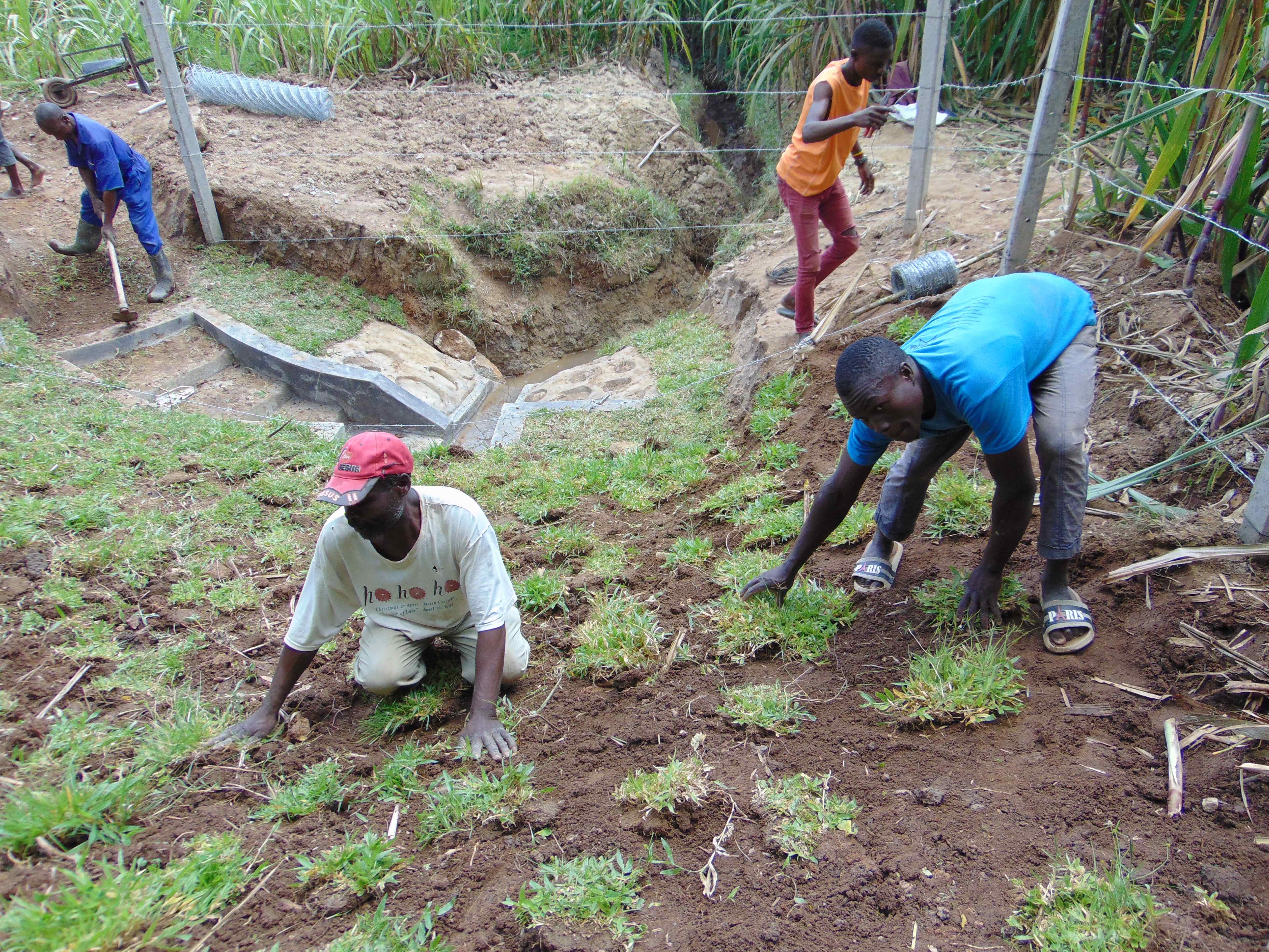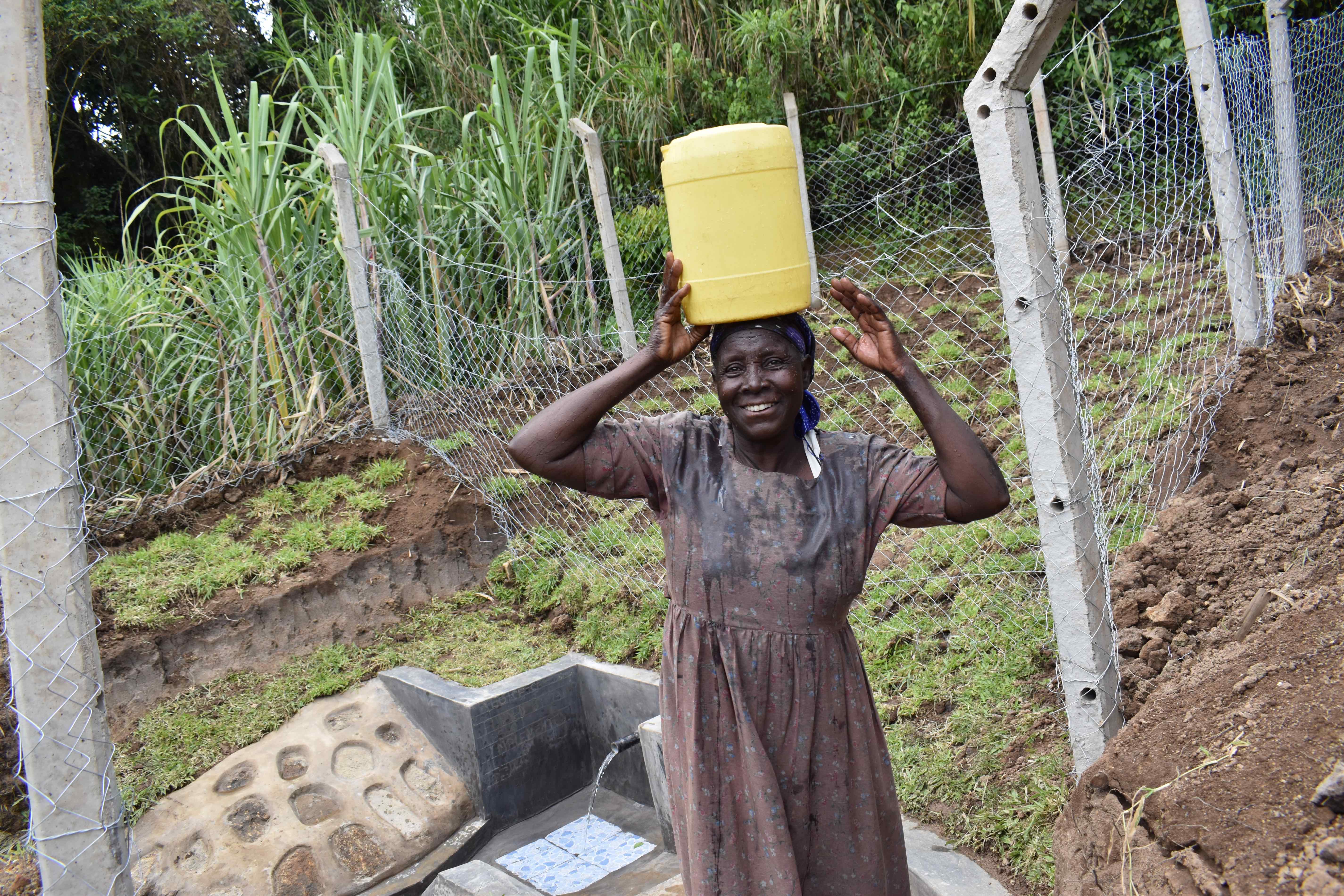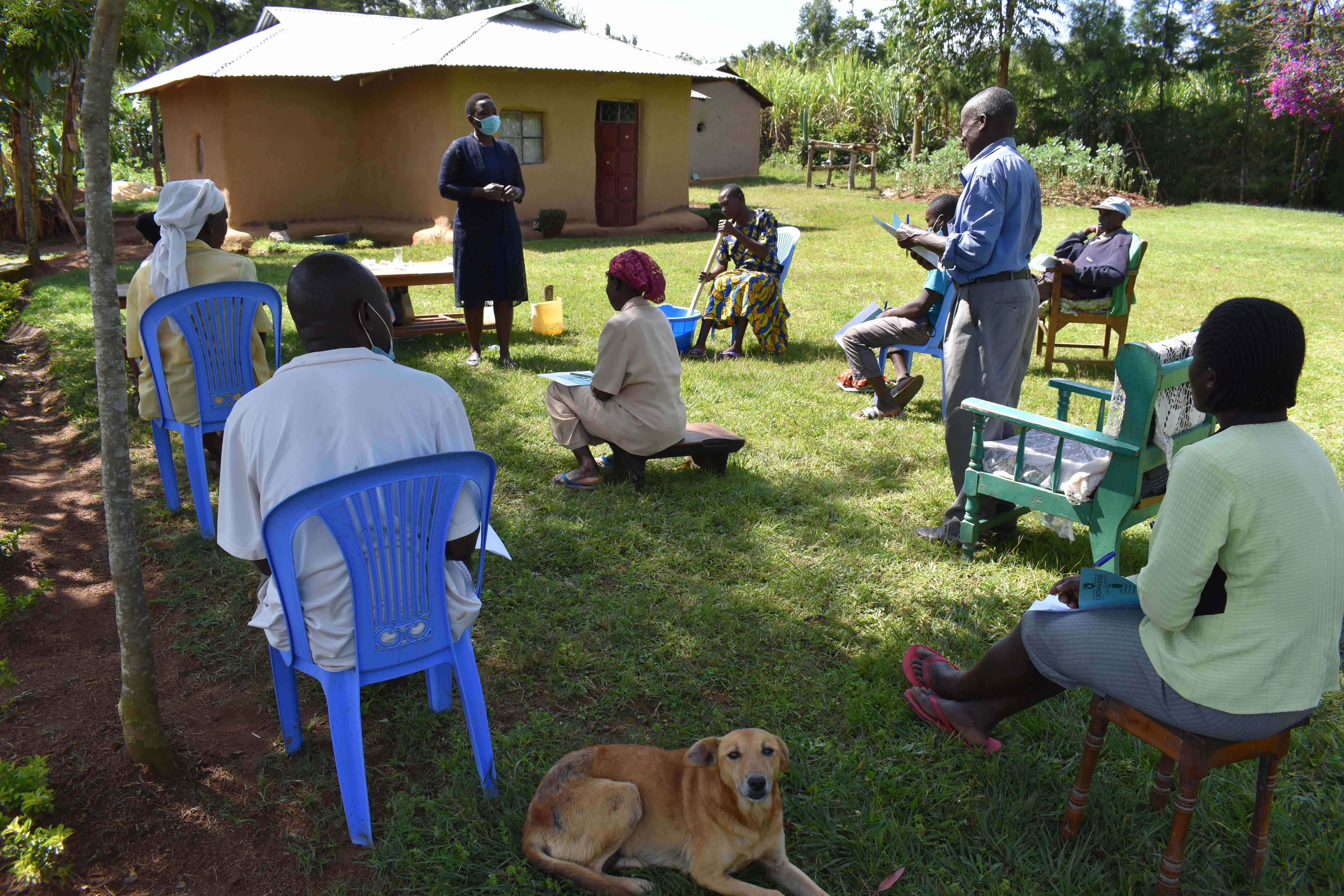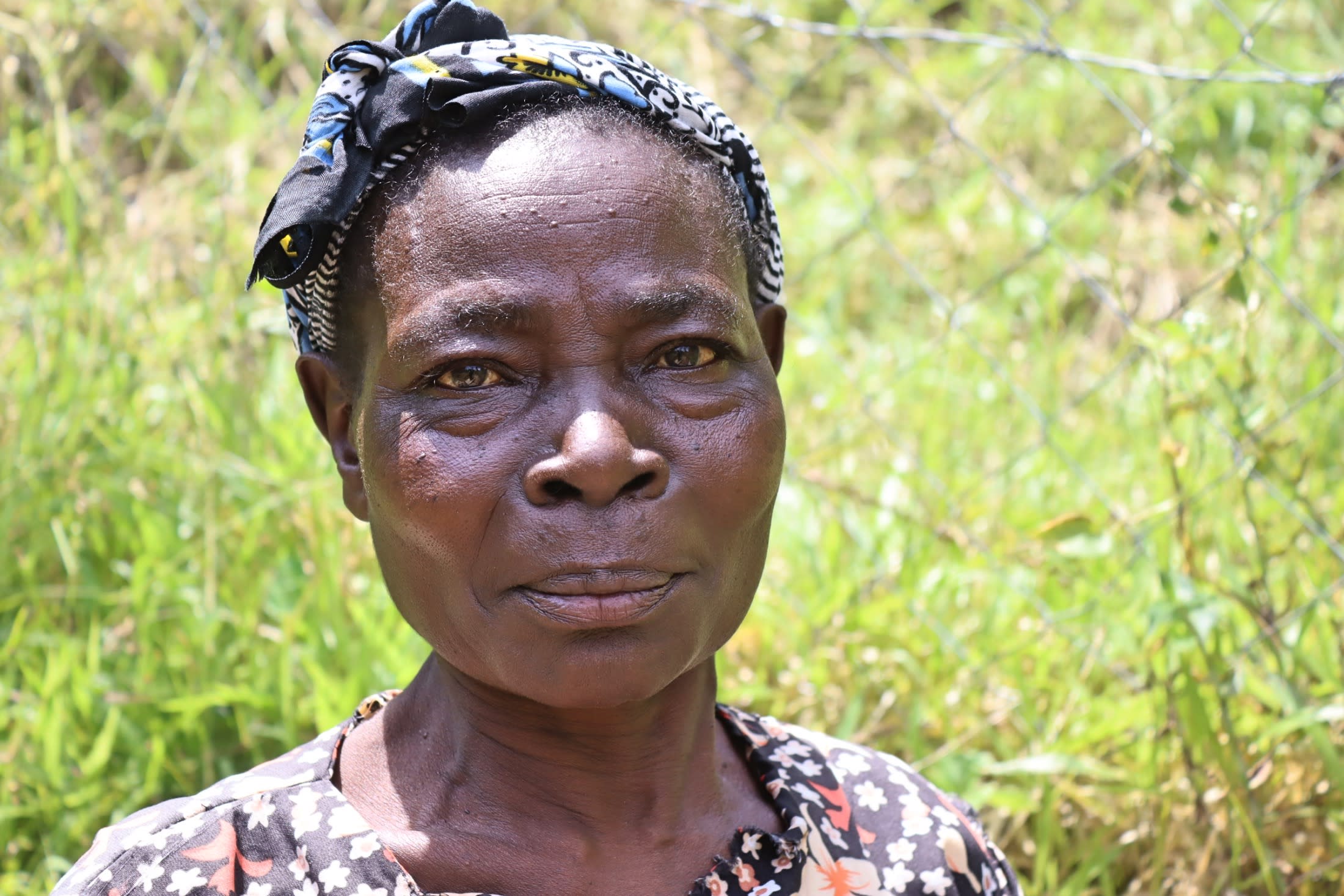The Shivagala community is a gently sloping land where community members grow sugarcane plantations and keep domestic animals such as cattle and goats. Though most people practice farming as their livelihood, there are a few people who are boda boda riders, taxiing people around on a motorbike to earn their living. There is a tradition of bullfighting here, which draws local and foreign spectators alike and serves as another source of income for the bull owners.
The homesteads are concentrated in one area of the village, and there is a particularly small cluster of homes with about 70 people who depend on Alois Chiedo Spring for water.
Alois Chiedo Spring looks like a small creek or a large puddle in the earth. Its bottom is covered in sand, mud, rotting leaves, and algae. Inside the water, insects and small animals such as frogs, snakes, and more call it home. Runoff from the rains flow straight into the spring water, mixing farm chemicals, residues from animal waste, and soil into the water people drink. This water is not fit for human consumption.
Community members report frequently contracting waterborne and water-related diseases due to consuming water from this unprotected spring. In most cases, they say, people get sick with typhoid and diarrhea, both of which render people unable to take part effectively in their daily responsibilities and work.
"I am tired of getting sick with typhoid and using a lot of resources to cater to its treatment. Furthermore, my passion of being a farmer is no more as most of the time I am unfit" to work, said 48-year-old Mr. Alois Chiedo, for whom the spring is named.
These illnesses can be expensive to treat, draining families of their financial resources. Adults lose a lot of productive time while recovering, and children miss their classes, often falling behind their classmates at school.
"Most cases I have contracted waterborne or water-related diseases like typhoid, which limit me from playing with my friends and also having personal studies," explained young boy Favour.
This wasted time is compounded by the amount of time people lose while waiting to fetch water. The process is tiring and time-consuming, and if people move too quickly, they could either fall into the water or stir up mud as they fetch it.
To draw water, community members must first perch on a few stones they placed across the spring to provide a makeshift dry spot. But the stones are covered in algae and usually wet, causing people to slip. Sometimes just their toes or shoes dip into the water, but falls are not uncommon.
Then, going one or two people at a time, they carefully submerge their container into the shallow pool of water as deep as they can to let it fill. Next, they have to top off their jerrycan using a smaller jug, bowl, or cup to scoop water from the spring and pour it into their larger jerrycan. Between fetching, people must wait for the water to settle lest they get extra sand and algae in their jerrycan.
With all this time spent trying to get the cleanest water possible, women face delayed daily work schedules and children are often late to school.
What We Can Do:
Spring Protection
Protecting the spring will help provide access to cleaner and safer water and reduce the time people have to spend to fetch it. Construction will keep surface runoff and other contaminants out of the water. With the community’s high involvement in the process, there should be a good sense of responsibility and ownership for the new clean water source.
Fetching water is a task predominantly carried out by women and young girls. Protecting the spring and offering training and support will, therefore, help empower the female members of the community by freeing up more of their time and energy to engage and invest in income-generating activities and their education.
Training on Health, Hygiene, COVID-19, and More
To hold trainings during the pandemic, we work closely with both community leaders and the local government to approve small groups to attend training. We ask community leaders to invite a select yet representative group of people to attend training who will then act as ambassadors to the rest of the community to share what they learn. We also communicate our expectations of physical distancing and wearing masks for all who choose to attend.
The training will focus on improved hygiene, health, and sanitation habits in this community. We will also have a dedicated session on COVID-19 symptoms, transmission routes, and prevention best practices.
With the community’s input, we will identify key leverage points where they can alter their practices at the personal, household, and community levels to affect change. This training will help to ensure participants have the knowledge they need about healthy practices and their importance to make the most of their water point as soon as water is flowing.
Our team of facilitators will use a variety of methods to train community members. Some of these methods include participatory hygiene and sanitation transformation, asset-based community development, group discussions, handouts, and demonstrations at the spring.
One of the most important issues we plan to cover is the handling, storage, and treatment of water. Having a clean water source will be extremely helpful, but it is useless if water gets contaminated by the time it is consumed. We and the community strongly believe that all of these components will work together to improve living standards here, which will help to unlock the potential for these community members to live better, healthier lives.
We will then conduct a small series of follow-up trainings before transitioning to our regularly scheduled support visits throughout the year.
Training will result in the formation of a water user committee, elected by their peers, that will oversee the operations and maintenance of the spring. The committee will enforce proper behavior around the spring and delegate tasks that will help preserve the site, such as building a fence and digging proper drainage channels. The fence will keep out destructive animals and unwanted waste, and the drainage will keep the area’s mosquito population at a minimum.

 Protected Spring
Protected Spring
 Rehabilitation Project
Rehabilitation Project



































